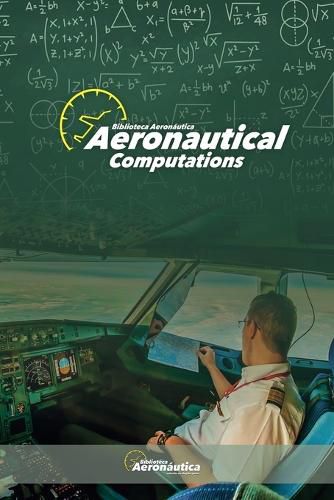Readings Newsletter
Become a Readings Member to make your shopping experience even easier.
Sign in or sign up for free!
You’re not far away from qualifying for FREE standard shipping within Australia
You’ve qualified for FREE standard shipping within Australia
The cart is loading…






This title is printed to order. This book may have been self-published. If so, we cannot guarantee the quality of the content. In the main most books will have gone through the editing process however some may not. We therefore suggest that you be aware of this before ordering this book. If in doubt check either the author or publisher’s details as we are unable to accept any returns unless they are faulty. Please contact us if you have any questions.
Mathematics and aviation have gone hand in hand since the dawn of time. From the first flight of the Wright brothers, pilots have needed to perform calculations for every phase of flight. From calculating the aircraft's range to converting temperature.
Thus, mathematics has become an indispensable part of the aeronautical world and any type of aircraft, regardless of its size and performance. While modern aircraft are equipped with computerized systems that perform all the calculations and relay the results to the pilot, in less-equipped aircraft, it is the pilot who must perform all the computations to optimize resources and ensure flight safety.
One of the mathematical cornerstones for aeronautical computations is the mathematical rule known as the "simple rule of three." A mathematical principle that has guaranteed success in aeronautical calculations and remains relevant today.
In this work, you will not learn simple mathematics, but rather mathematics applied to aviation. This is not a mathematics book; it is an aeronautical book that will teach you some mathematical concepts to optimize your flight.
$9.00 standard shipping within Australia
FREE standard shipping within Australia for orders over $100.00
Express & International shipping calculated at checkout
This title is printed to order. This book may have been self-published. If so, we cannot guarantee the quality of the content. In the main most books will have gone through the editing process however some may not. We therefore suggest that you be aware of this before ordering this book. If in doubt check either the author or publisher’s details as we are unable to accept any returns unless they are faulty. Please contact us if you have any questions.
Mathematics and aviation have gone hand in hand since the dawn of time. From the first flight of the Wright brothers, pilots have needed to perform calculations for every phase of flight. From calculating the aircraft's range to converting temperature.
Thus, mathematics has become an indispensable part of the aeronautical world and any type of aircraft, regardless of its size and performance. While modern aircraft are equipped with computerized systems that perform all the calculations and relay the results to the pilot, in less-equipped aircraft, it is the pilot who must perform all the computations to optimize resources and ensure flight safety.
One of the mathematical cornerstones for aeronautical computations is the mathematical rule known as the "simple rule of three." A mathematical principle that has guaranteed success in aeronautical calculations and remains relevant today.
In this work, you will not learn simple mathematics, but rather mathematics applied to aviation. This is not a mathematics book; it is an aeronautical book that will teach you some mathematical concepts to optimize your flight.